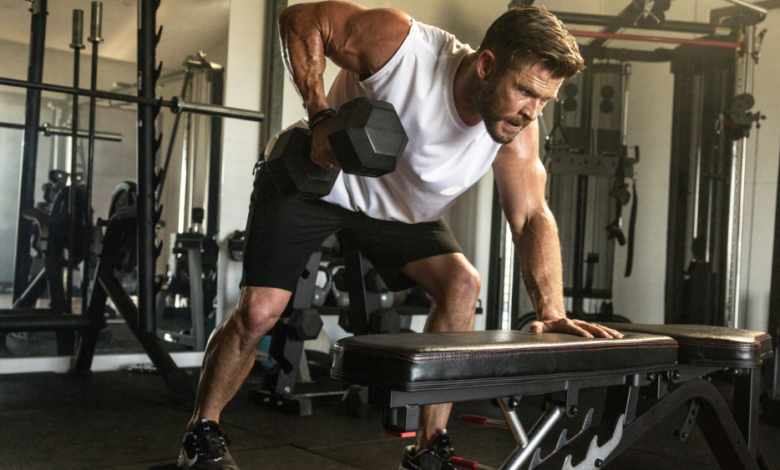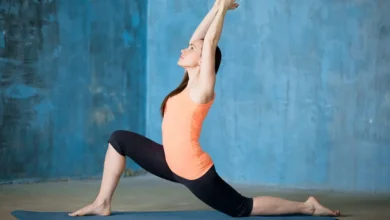Strong Base for Every Workout

Creating a modern fitness space involves more than just high-end machines and trendy lighting. One of the most overlooked yet essential components of any gym is the flooring. Whether it’s a boutique studio, a large-scale health club, or a corporate fitness center commercial gym flooring plays a vital role in ensuring safety, performance, and durability. In this article, we’ll dive deep into the importance of choosing the right gym flooring, explore popular options, and explain how to make the best selection for your commercial facility.
Why Commercial Gym Flooring Matters
The gym floor is constantly under pressure—from dropped weights and high-impact workouts to sweaty shoes and heavy machines. Unlike residential or office floors, commercial gym flooring must withstand extreme use while still offering comfort and functionality. The right flooring supports exercise performance, reduces injury risk, and contributes to the overall atmosphere of the gym.
Here are the core benefits:
1. Safety First
Fitness involves a lot of movement—jumping, sprinting, stretching, lifting. A quality gym floor minimizes slip hazards and cushions landings, protecting users from injury.
2. Durability
Commercial spaces experience far more traffic than home gyms. Proper can handle everything from foot traffic to heavy machinery without showing wear or breaking down over time.
3. Noise Reduction
Gyms can be loud, especially in spaces with multiple cardio machines, weights, or group classes. Rubber or foam flooring materials help dampen sound and reduce vibrations for a more pleasant environment.
4. Easy Maintenance
Commercial gyms need flooring that’s hygienic and easy to clean. Sweat, dirt, and equipment residue can quickly accumulate, so a surface that resists moisture and is easy to sanitize is ideal.
See also: The Essential Role of Medical Staffing Agencies in Modern Healthcare
Common Types of Commercial Gym Flooring
There is no one-size-fits-all solution. The best flooring depends on the types of workouts your facility supports. Below are the most popular materials used in commercial settings:
Rubber Flooring
Rubber is the go-to choice for many gyms due to its strength, elasticity, and impact absorption. It’s ideal for free weight areas, cardio zones, and general-purpose workout spaces.
- Pros: Durable, slip-resistant, absorbs shock, reduces noise
- Best for: Weightlifting zones, high-traffic areas, general fitness floors
Foam Tiles
Foam flooring offers a soft surface, often used in martial arts, yoga studios, or stretching areas. It’s lightweight and easy to install but not suitable for heavy weights.
- Pros: Comfortable underfoot, easy to clean, budget-friendly
- Best for: Stretching zones, bodyweight exercises, kid-friendly fitness areas
Vinyl Flooring
Vinyl provides a sleek, professional look and works well in reception areas, yoga studios, or group fitness rooms where style and durability are both important.
- Pros: Water-resistant, easy to maintain, design flexibility
- Best for: Cardio rooms, dance studios, locker rooms
Artificial Turf
Used increasingly in functional fitness spaces, turf is great for sled pushes, agility drills, and boot camp-style training.
- Pros: Suitable for dynamic movements, visually appealing, durable
- Best for: Functional training zones, sports performance areas
Key Factors to Consider When Choosing Commercial Gym Flooring
Before selecting flooring for your facility, think about how each area of your gym is used. Different spaces require different specifications:
1. Thickness and Density
High-impact zones like weight rooms need thicker, denser flooring (up to 1 inch thick) to absorb shock and protect subfloors. Lighter-use areas can manage with 6mm–8mm flooring.
2. Moisture Resistance
In areas like locker rooms or near water fountains, water resistance is crucial. Materials like vinyl or sealed rubber offer superior moisture control.
3. Installation Type
Tiles, rolls, and mats each have their pros and cons. Interlocking tiles are great for flexibility and quick repairs. Rolls offer a more seamless finish and are ideal for large spaces.
4. Budget and Longevity
While premium materials like vulcanized rubber cost more upfront, they save money over time due to fewer replacements and repairs. Cheaper flooring may need frequent updates.
5. Aesthetic Appeal
Color, texture, and design contribute to the gym’s branding and atmosphere. Today’s commercial gym flooring comes in a wide range of visual styles to match any theme.
Maintenance Tips for Long-Lasting Floors
Once installed, proper care will ensure your flooring remains in excellent condition:
- Daily Sweeping or Vacuuming: Keep dust, grit, and sweat off the floor.
- Mop Weekly: Use a pH-neutral cleaner with a damp mop. Avoid soaking.
- Deep Clean Monthly: Auto-scrubbers or floor machines help clean large areas thoroughly.
- Check for Damage: Replace worn or damaged tiles to prevent tripping hazards.
Proper maintenance enhances both safety and appearance while maximizing the flooring’s lifespan.
Where to Use Different Flooring Types in a Commercial Gym
Let’s look at where different materials typically shine inside a fitness facility:
| Area | Recommended Flooring |
|---|---|
| Free Weights | High-density rubber tiles or mats |
| Cardio Zone | Rubber rolls or vinyl |
| Yoga Studio | Foam or vinyl |
| Functional Training | Artificial turf or thicker rubber |
| Locker Rooms | Moisture-resistant vinyl or sealed rubber |
| Entry/Reception | Stylish vinyl or luxury vinyl tile |
Planning ahead ensures your facility meets both functional and aesthetic needs across all zones.
Eco-Friendly Options
Many commercial gym flooring products today are made from recycled materials—especially rubber. Not only does this reduce waste going into landfills, but it also aligns your business with sustainable practices. Some flooring options also contribute to LEED points for eco-conscious construction.
Choosing sustainable flooring doesn’t mean compromising on performance. In fact, recycled rubber tiles or rolls often match or exceed the durability of virgin materials.
Final Thoughts
Investing in the right commercial gym flooring is one of the smartest decisions a gym owner can make. It enhances the user experience, improves safety, protects expensive equipment, and contributes to the visual identity of your facility. From rubber tiles for weight areas to foam surfaces for group fitness, there’s a solution for every space and budget.
As fitness trends evolve and customer expectations rise, your flooring must keep up. Choosing high-quality, easy-to-maintain materials ensures your gym looks professional and functions at the highest level for years to come.




